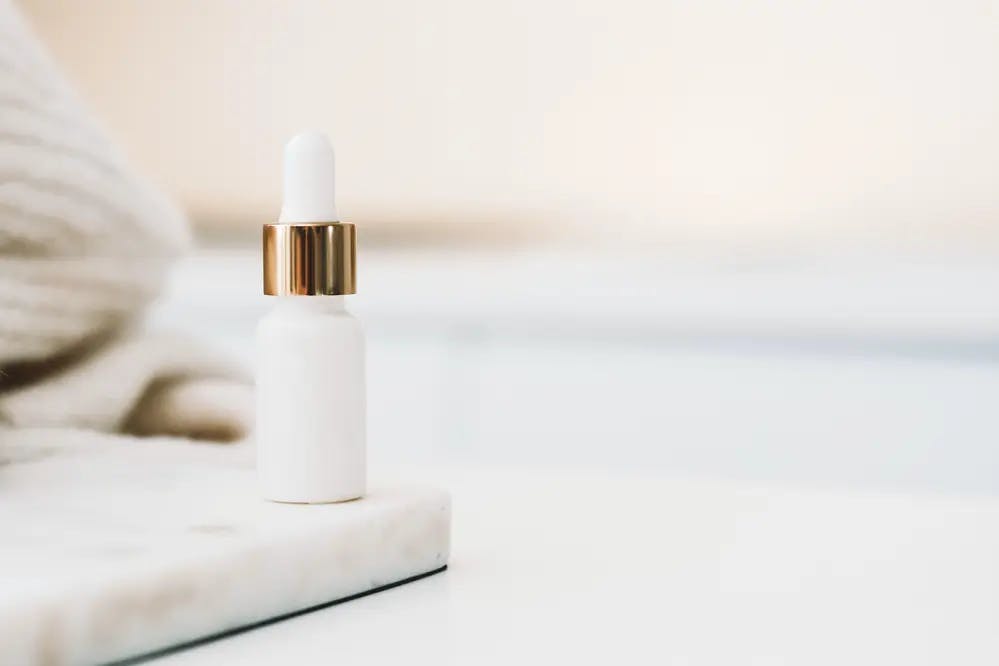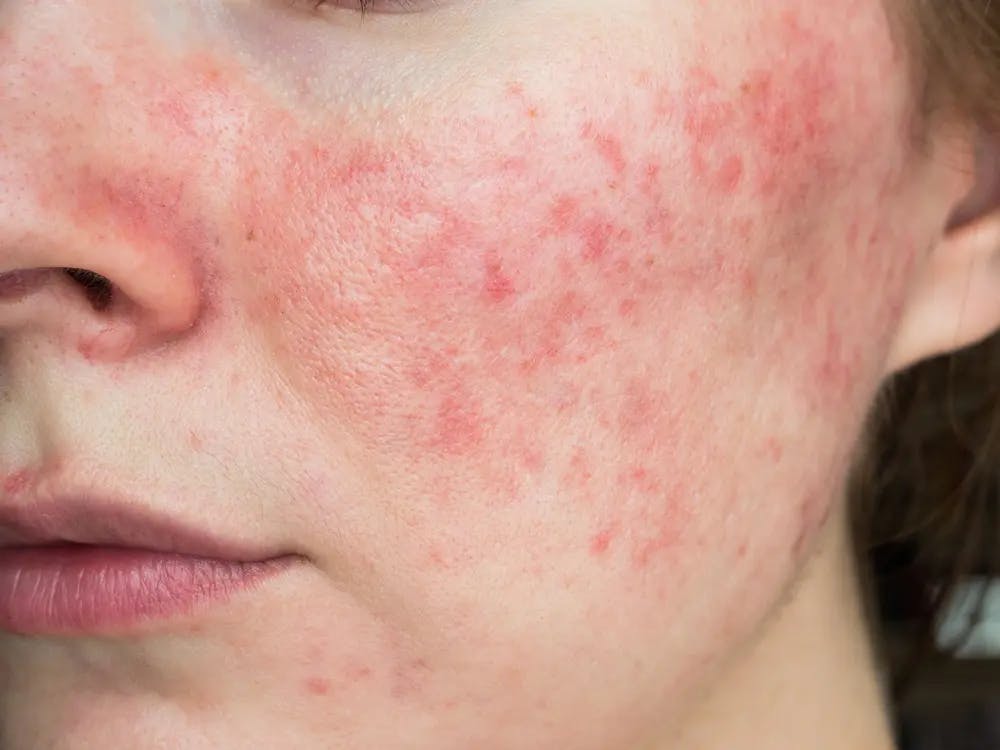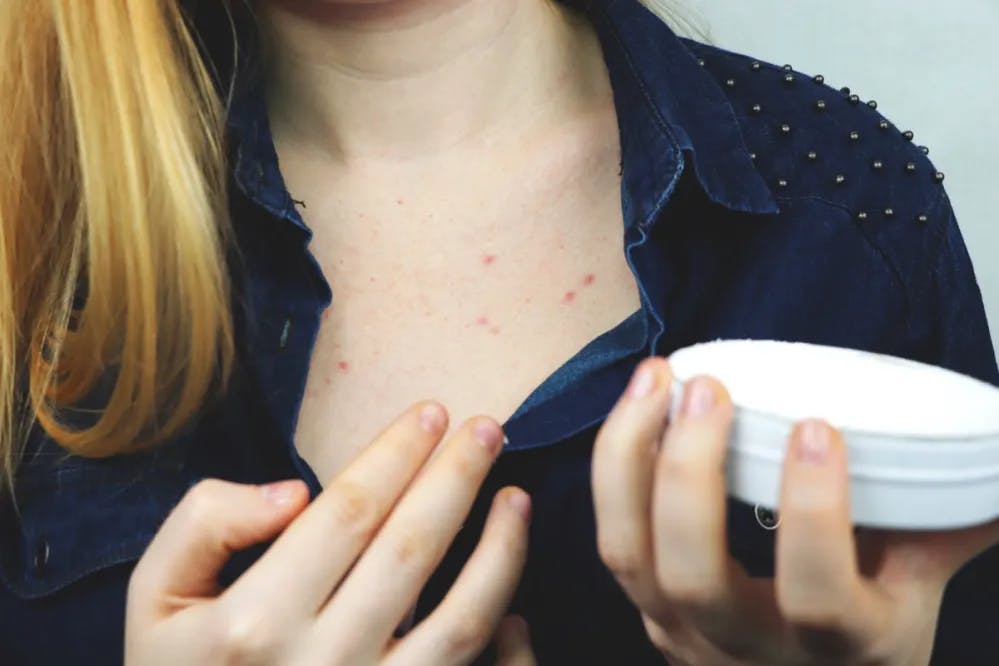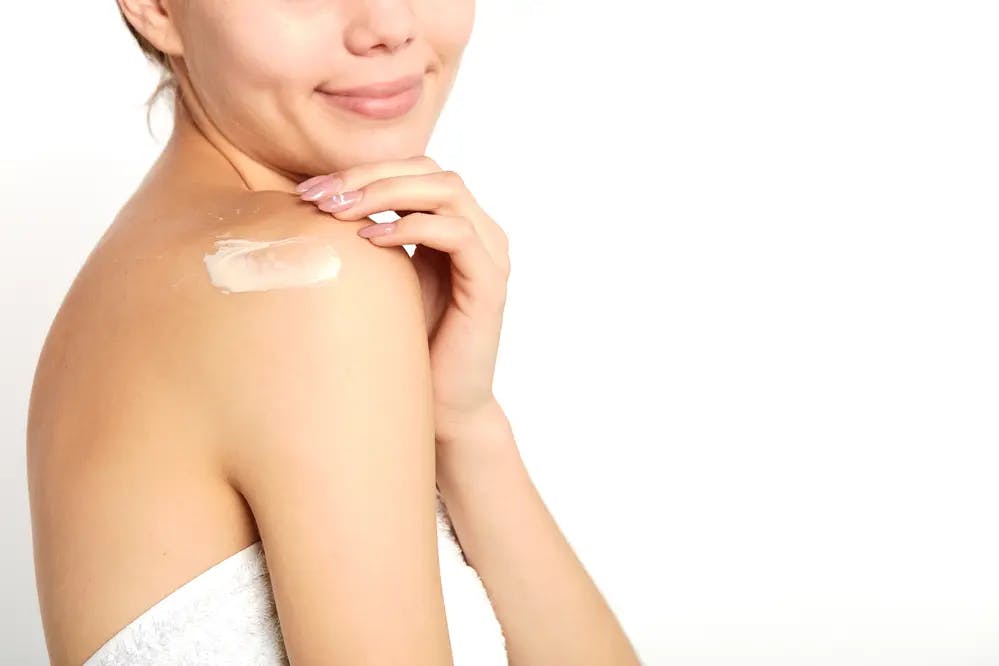Skin Purging vs. Skin Breakout: Are They the Same?
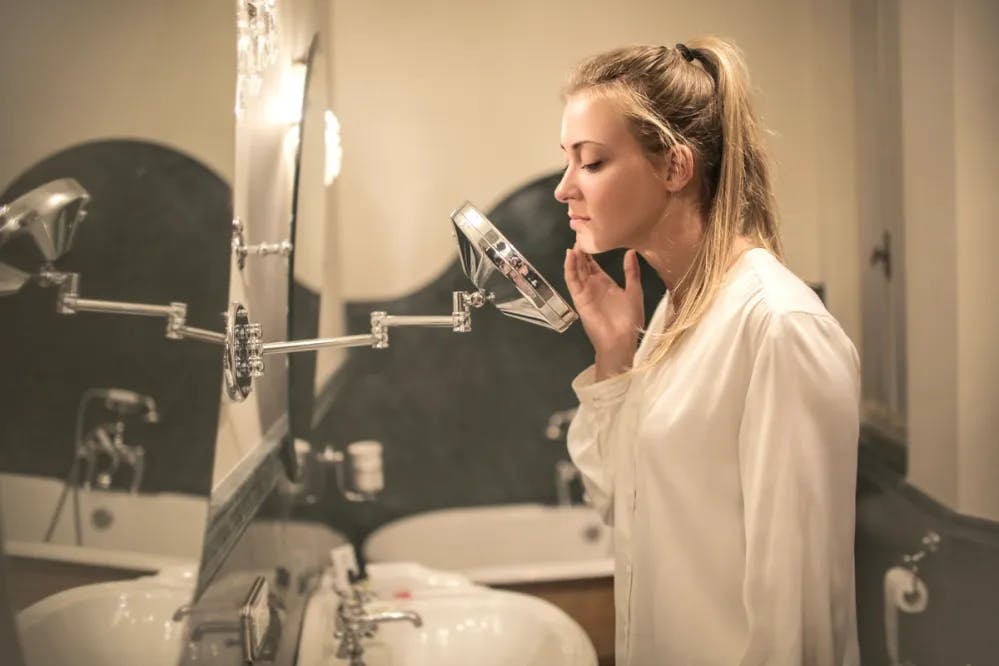
Table of Contents:
- Let’s Start With Skin Purging
- What Causes Skin Purging?
- How Long Does Purging Last?
- What About Skin Breakouts?
- What Causes a Skin Breakout?
- How Long Does a Skin Breakout Last?
- How To Tell Skin Purging vs Skin Breakout
- Can You Treat Skin Purging?
- Conclusions
Have you ever tried a new skin product or acne treatment and found it actually causes you a flare-up of blackheads, pimples, or irritation? If the answer is yes, there are two things that might be happening: You are either skin purging to make way for new and healthier cells, or you’re having a reaction or breakout. Both of these can cause significant discomfort, but one of them means things are working as expected!
In this article, we will be exploring the differences between skin purging vs skin breakout. We’ll also go through some of the active components that can cause them and tell you how to deal with them. So, let’s get started!
Let’s Start With Skin Purging
Skin purging is a dermatological response of skin cells to a new active ingredient applied topically. This is more prominent for exfoliating actives such as AHAs, & BHAs. For example, as part of acne treatment. You accelerate the cellular turnover by using products with chemical actives such as AHAs and BHAs, so there’s a sebum buildup on the skin surface. This rapid skin response and removal of dead cells appear as skin purging.1
What Causes Skin Purging?
Skin purging happens when your skin gets used to a new product, which accelerates cellular turnover to bring fresh skin cells to the surface. Because these new cells need to come out, you first have to let your skin get rid of a lot of older sebum and debris - hence why things usually seem to get worse as soon as you start the treatment!
Removing dead cells from the skin surface is essential to have glowing fresh skin. Chemical actives are commonly used to do this job, e.g. AHAs and BHAs. However, under the influence of these actives, this process may become quick & rapid. This can cause dryness, redness, and irritation along with scales on the skin's surface.
The sebaceous glands (microscopic glands in your hair follicles) raise the sebum secretion, and the skin gets a sebum buildup. This leads to inflammation and the clogging of the skin pores. This inflammatory scenario is called “Skin Purging” and basically means that as the skin turnover speeds up, the skin will shred dead cells faster - leading to flaking, peeling, and dryness.2,3
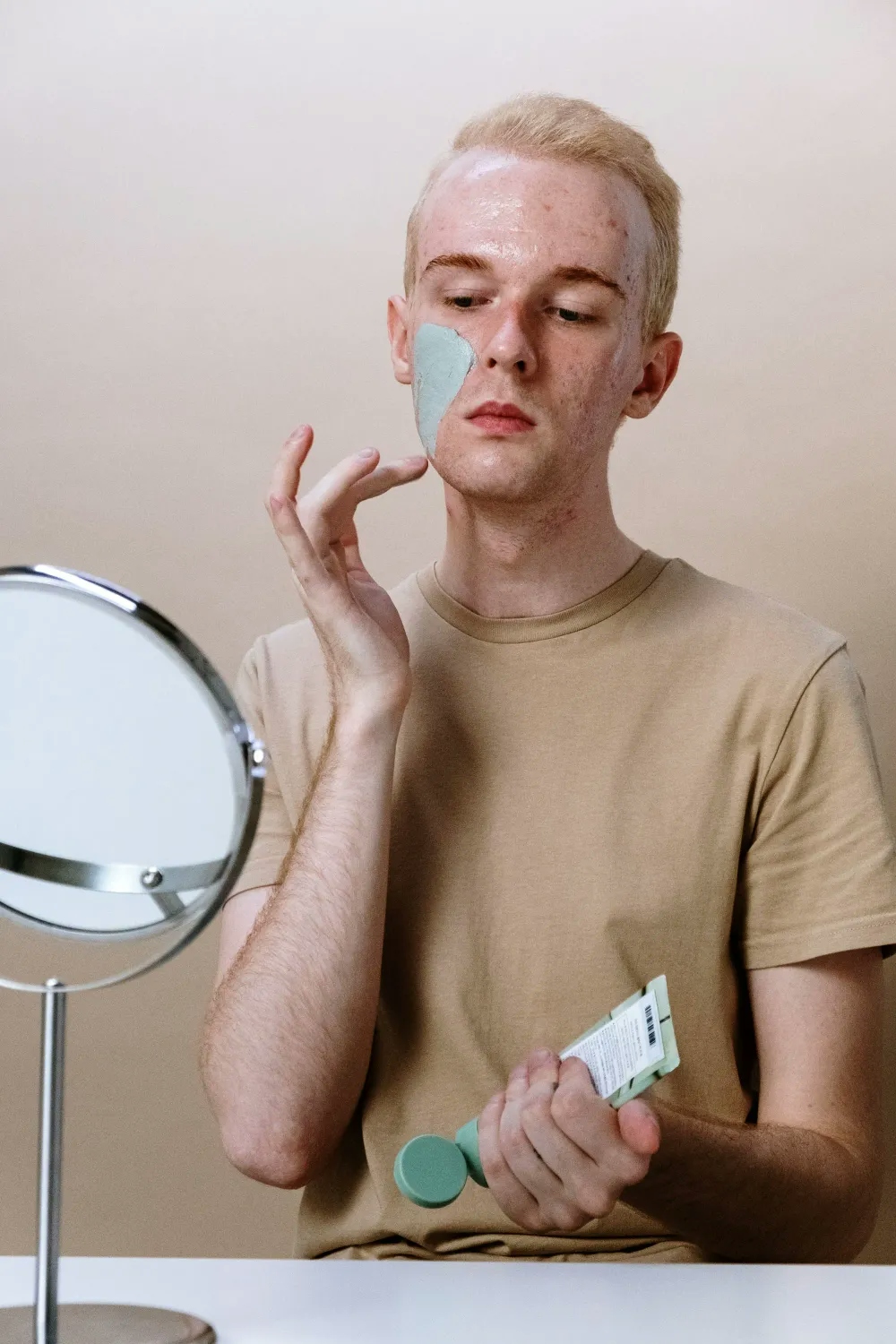
How Long Does Purging Last?
Skin purging normally resolves itself after about a couple of weeks to a month (that’s how long it takes for your epidermis or upper skin layers to renew entirely). Purging is a sign that the treatment is working, so you should continue with it as prescribed. However, during that time, it’s normal to experience some swelling, redness, itchiness, and more pimples than before starting the treatment.
What About Skin Breakouts?
Skin breakout is a broader term that refers to your skin reacting to something it’s sensitive or allergic to. A breakout can cause clogged pores and blemishes, as well as irritation and inflammation. Although there’s a chance your skin might get used to the new product, it’s more likely for it to actually cause further damage. So, if you think your skin is not purging but having a breakout, it’s always best to discontinue the use of the product.
What Causes a Skin Breakout?
There can be internal and external factors at play that can lead to a skin breakout. We mentioned comedogenic ingredients, but poor body metabolism, stress, hormonal changes, some medications such as birth control, or a simple accumulation of dead cells on the surface can also increase the likelihood of a breakout.
How Long Does a Skin Breakout Last?
Unless you are using a product that is supposed to increase cell turnover, you shouldn’t have this type of irritation. If a breakout is caused by an irritating ingredient present in a new skincare product, you should consider discontinuing its use.
How To Tell Skin Purging vs Skin Breakout
Skin purging refers to a reaction when you apply an active ingredient that is supposed to accelerate cellular turnover. A breakout, on the other hand, can be induced by a product but also by other internal players. The two vary in appearance and severity, but also in how long each lasts and the timeframe between different occurrences (which can be immediate for a breakout or can take a few weeks to re-emerge in the case of a purge).
If you’re unsure whether you are having a skin purge or a breakout, one way to distinguish between the two is by closely examining the appearance of your skin. Purging usually causes a colony of white or blackheads, while breakouts tend to be pimples. Both expose the fresh skin cells to the environment, so they are typically very uncomfortable.
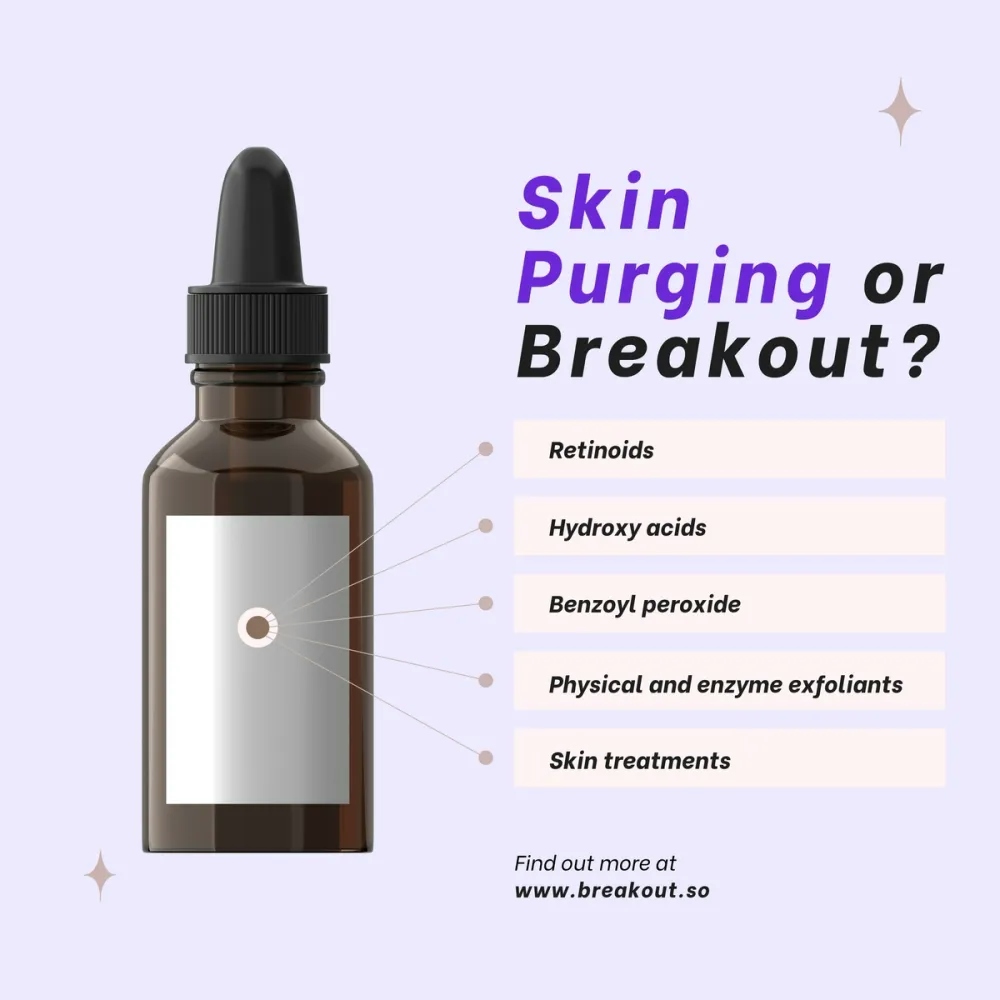
The best way to understand whether you are going through skin purging or an episode of skin breakout is to take a look at the ingredients contained in your skincare products.
Among skin actives, certain chemical compounds are known for dead cell removal, and exfoliation and are more likely to cause skin purging. You can analyze the INCI list of skin care products and figure out the active causing purge.4 Some of the key chemical actives are listed here:
- Retinoids: A derivative of Vitamin A included in numerous anti-aging products (you can find it under retinol, retinal, tretinoin, adapalene, and retinyl palmitate, among others).
- Hydroxy acids: These acids include alpha-hydroxy (or AHAs, such as lactic, glycolic, mandelic, and malic acids) and beta hydroxy (salicylic acid) or polyhydroxy acids (PHAs, such as gluconolactone and lactobionic acid).
- Physical and enzyme exfoliants: Scrubs, peeling gels, brushes, enzyme masks, papain, actidin, bromelain, etc.
- Skin treatments: Chemical peels, microdermabrasion, and laser treatments can also lead to skin purging.
If the product you are trying does not include any of these actives, you are probably suffering from a skin breakout.
Can You Treat Skin Purging?
Most acne treatments and treatments using active cell turnover ingredients will cause your skin to purge, so in that case, you can only try to limit its severity. This is why it’s generally best to introduce these products one at a time, as using multiple new ones at once can make it harder to pinpoint which one caused skin purging.
Pro Tip: Date when you’ve opened your products and begun using them regularly to get a better idea of which product might be causing your purge. Adding your products to your Breakout routine page helps you keep track of the products you have used and which ones you liked or did not like. It also lets you share your routine with other people online, including the Breakout community. Create your profile now!
A good way to avoid further inflammation is to stick to a skin routine that includes cleansing, moisturizing, and always using sunscreen during the day! You might be tempted to stop using the exfoliating or retinoid product, but you need to stick to it and get through the “gets worse before it gets better” phase.
If you are going to add retinol, peel, or acid to your skincare routine and you’re a little scared about skin purging, you can try the ‘ease in’ method to minimize the effects. You can start with a lower concentration of product or use it less frequently at first (for example, just once a week instead of every day). You can also wash off some of the product after some minutes. You can then gradually increase the amounts by building your way up to twice or three times a week as your skin becomes more tolerant of the ingredient, decreasing the chances of a purge.
Conclusions
Skin purging is an expected consequence of using certain active ingredients as part of your skin treatment, especially AHAs and BHAs that are meant to exfoliate and remove dead cells from your skin.
Unlike a breakout, which tends to happen when you’re allergic or sensitive to a new component, purging is all about allowing new and healthy cells to make their way to the surface.
Do you want to talk about more skincare topics like this? Join our community!
References
(1) Sehgal, V.; Srivastava, G., Exfoliative dermatitis. Dermatology 1986, 173 (6), 278-284.
(2) Li, J.; Zheng, H.-Y., Erythroderma: a clinical and prognostic study. Dermatology 2012, 225 (2), 154-162.
(3) Tang, S.-C.; Yang, J.-H., Dual effects of alpha-hydroxy acids on the skin. Molecules 2018, 23 (4), 863
(4) Kanlayavattanakul, M.; Lourith, N., Therapeutic agents and herbs in topical application for acne treatment. Inter. J. of Cosmet. Sci 2011, 33 (4), 289-297.
